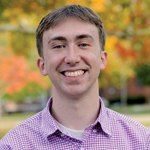Occupying Wall Street: An Ethnography
What follows is an abridged excerpt of a final paper by Hailey Sowden ’15 for Introduction to Cultural Anthropology. Assistant Professor Gillian Goslinga notes that Hailey researched the Occupy Wall Street (OWS) movement in New York’s Zucotti Park and “ended up writing a stellar ethnography of a nascent political movement from a perspective rarely offered in the media.”
Liberty Plaza
For a long time money was only present within the bounds of Liberty Plaza through donations. Jars soliciting donations for OWS as a whole, specific working groups, and later, specific people and their personal encampments were scattered throughout the park. Eventually, vendors began camping on the perimeter of the encampment selling OWS buttons adorned with OWS slogans to passers-by. Within the park everything was assumed to be free, but just a few feet outside of it, everything was assumed to come at a cost.
Occupiers worked so that all of the needs met by society in the outside world could be met equally well within the occupation, proving that the trappings of the dominant culture were not necessary to maintain a harmonious and healthy community. Police might have patrolled the outside of the encampment, but occupiers, specifically the security working group, took it upon themselves to patrol the inside. People were fed, and people were clothed, the ground was swept and the garbage was emptied. There was even free counseling offered at the “empathy table.”
All of this was accomplished within the encampment without any sort of monetary system. Everything within the occupation was given away for free, including food, clothes, and blankets. One morning a young boy threw a wrench in the system by standing by the coffee dispenser and charging a dollar per cup of coffee. Most occupiers trying to get their cup of morning coffee just assumed that he was joking. When he persisted, many didn’t take the coffee at all.
Just as money had originally belonged to both no one and everyone within the park, space was also communally held. For the first several days, perhaps even the first several weeks of the occupation, space in the park was not defined. People slept where they wanted to and packed up their beds during the day. Only the kitchen area was a firmly designated space. This gradually began to change as more people flowed into the park and a need for physical infrastructure became apparent. By the final days of the occupation, every available space served a purpose and elaborate camps of tents and tarps replaced temporary sleeping areas. Along with the designated kitchen space, there were spaces for art, for the People’s Library, for the drum circle, and for spirituality. There were roads. The park lost its feel as a temporary camp and became, at least in some ways, a bustling city.
The introduction of tents on the afternoon of October 21st marked a dramatic moment in the development of the community. Before that afternoon, police had been strictly enforcing no-tent rules. I do not know what brought about the change of enforcement, and no one else seemed to either, but before tents, everything within the community was by necessity transparent. After tents, privacy was reintroduced and certain things could be hidden.
The tents soon became a point of contention among the occupiers, as many felt that those with tents took up more than their fair share of the space. Whereas the previous system had been almost classless—everyone ate the same food, drank the same water, and slept in the open air on the ground, tents added an air of inequality. Some groups had tents, while others did not. Encampments were named and neighborhoods formed, each with their own stereotype. I recall that one encampment took me in and told me I was lucky that a group on the west side of the park hadn’t taken me in. According to this tent-less group, located behind the empathy table, the west side, closer to the nearly 24-hour drum circle, was infamous for drug use and, according to my new camp-mates, notoriously unfriendly and even dangerous.
That same weekend marked a significant transition in the culture of trust. Before that weekend I had never heard anyone complaining of stolen possessions within the encampment, even though personal belongings were left on the streets of New York City, something that, given another situation, would seem imprudent. But from that weekend onward, every time that I visited the park I heard complaints of rampant theft and a decline in the culture of trust among the occupiers.
Liberty Plaza was a classic example of a liminal space: caught between the alternative and the mainstream, the private and the public. The occupiers were even caught between night and day, as the lights around the park never went off. The space was in constant flux, both because of the constant inflow of people and because of the uncertainty—the ever-present possibility of eviction.
Liberty Plaza, an exceptional experiment in the power of community, demonstrates that many things we take for granted about society, specifically a reliance on money and a hierarchical power structure, are not necessarily true of all societies everywhere. Even in the individualistic metropolis that is New York City, beneath the sterile gaze of glass skyscrapers and suited businessmen, a classless community can flourish. UPFRONT

